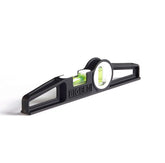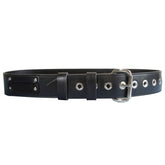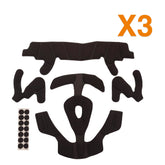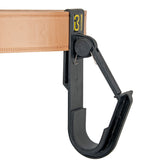When working at height, there are several actions that must always be taken in order to create an environment that is safe for all involved. Any work that takes place on a construction site has the potential to be dangerous and these dangers are exacerbated when construction work takes place at height. For this reason, legal regulations exist in relation to how often scaffolding must be inspected when it is being used on site.
In this article we are going to explore the regulations that have been established in order to maintain scaffolding safety, as well as additional actions that can be taken to increase safety when working at height.
Work at Height Regulations 2005
The Work at Height Regulation Act of 2005 requires that any scaffolding that has been erected must be inspected before it is used for the first time. Moving forwards, scaffolding must then be inspected every seven days until it is de-constructed. Additionally, scaffolding should be inspected every time it is exposed to adverse weather conditions, such as rain or heavy winds. If scaffolding is altered in any extensive way whilst it is erect then it should also be fully inspected again before it is used.
As well as being applicable to any scaffolding that is used on a construction site, these regulations also apply to any structure that a worker could fall more than two metres from.
Who should conduct Scaffolding Inspections?
Scaffolding inspections should always be conducted by a qualified and competent professional. The person in charge of conducting the inspection should always have a suitable level of experience in doing so. Different scaffolding setups will range in complexity and it is essential that anyone in charge of inspection is completely aware of what it is they need to look for.
The Construction Industry Scaffolders Registration Scheme (CISRS) is able to assess those wishing to be able to inspect scaffolding in order to declare them competent. However, it is not a legal requirement to be assessed by the CISRS. It is also possible for a person to have received training in scaffolding inspection from a recognised scheme, or simply to have a suitable level of relevant experience.
Reports of scaffolding collapsing are rare, but when accidents of this type do happen it is common that fatalities or serious injuries will occur as a result. If during a scaffolding inspection any faults are found, then they should be remedied immediately and completely rectified before the scaffolding is used again. Any inspection that results in an unsafe for use result should always be recorded and kept on site for the duration of the project. This record should also be made available for at least three months after the incident.
Although it is not a legal requirement to use ScaffTags, it is recommended that some form of tagging system is used to indicate that the scaffold has been checked before use.
At Leach’s we have a range of ScaffTag solutions available that serve to increase scaffolding safety and simplify the process of inspection. Click here to check out our ScaffTag products!


















